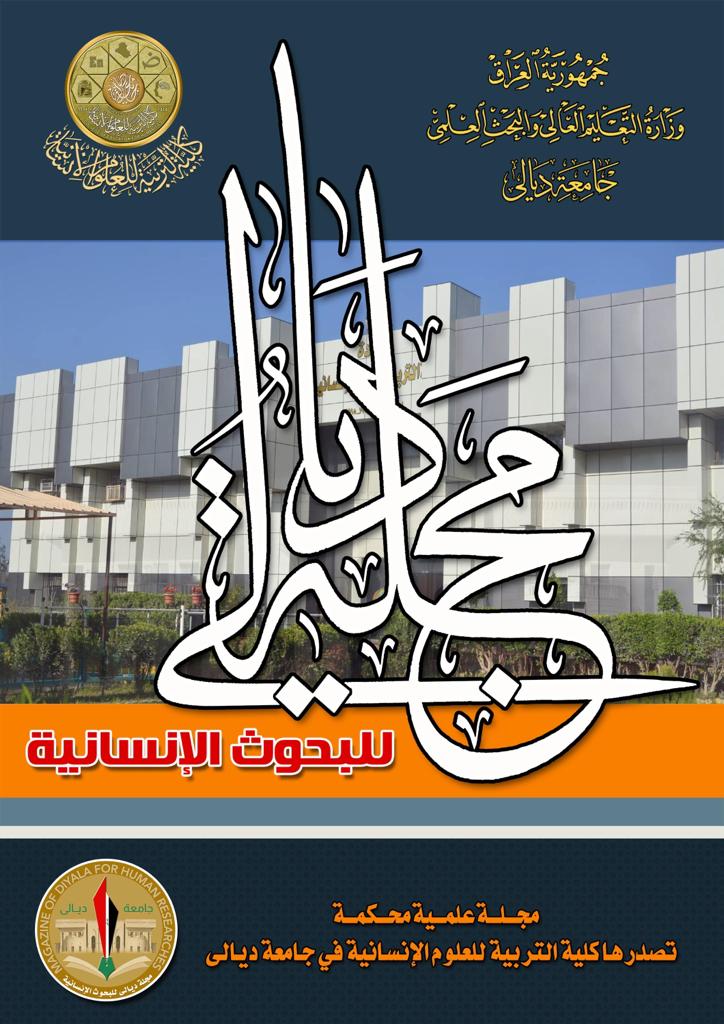Text and the Interplay of Meaning: A Study in the Sumerian Mythological Space in Dunya Mikhail's The Iraqi Nights
النص وتفاعل المعنى: دراسة في الفضاء الأسطوري السومري في ليالي العراق دنيا ميخائيل
DOI:
https://doi.org/10.57592/djhr.v1i91.427الكلمات المفتاحية:
Dunya Mikhail, illusionary space, Iraqi Nightsالملخص
Many common concepts are not accurate in Arabic critical books either because of translation or the lack of resources. One is the connection of woman poetry in expressing the inner worlds, emotions and sentiments of a woman with an attempt to impose a culture that challenges the masculine culture. Dunya Mikhail (1965-) sees that woman can go through all the fields that male poets write in since she believes that there is no difference between the two. Therefore, a woman can write in every field but she differs in her visions of writing even when she uses the same techniques used by the man. The question here, what is this different vision of the woman? The answer will be it is the nature of employing thoughts, ideas and their construction in the text. The most important thing lies in the concentration on certain aspects that form and draw the world from a feminine point of view. This vision specifically leads us to study Dunya Mikhail's collection of poetry The Iraqi Nights (2013). One way to penetrate this vision is the domain of mythological space. It is considered as a world that contains the text and makes an integrative relation between the vision, devises and techniques.
What does mythological space mean? Each completed poetical text has two main worlds; a world that forms the text and a world that furnishes it. The formed world is created in the mind and the subconsciousness of the poet. It is an illusionary space. Whereas the other world is the textual space that is revealed by the drawings of the poems. It is a textual space. This study concentrates on the illusionary space because it is the incubator for thoughts and the poetical act of the text.
In The Iraqi Nights, the poet makes use of the Sumerian mythological space whether in characters, symbols, suggestions or written symbols that furnishes the text and creates a new vision concerning the values of life in Iraq specifically after the wars Iraq had undergone.
This paper is divided into an introduction that sheds lights on the concept of mythological space and its types in this collection of poetry. First section deals with the illusionary space of the text. The second section studies the techniques of poetical readings as symbols, characters and drawings within the texts. It ends up with a conclusion that sums up the findings of the study.
Introduction
The meaning of space is connected with the concept of the place to the extent one can not distinguish between the two especially in the critical Arabic studies that coincide with the emerging of the narrative theory whether in practice or speculation in modern Arabic literature. Such studies transform the visions of the narrative theory to the study of the structure of place in poetry and its connotations and themes without any clear ideation of it. Such visions were left without shedding lights on them till specialized books were translated or written about the notion of place (Nejmi 6).
Space is not only a textual formation. It is the formation of the inward and outward dimensions of the textual experiment. A clear and accurate understanding of the space is achieved by the relation that connects and brings close together the outer and the inner dimension of space in the text. Space is determined by the ability of the reader to discover its boundaries and reveal its formation. It is the awareness of the reader of space that parallels to or even exceeds his awareness of the approaches of analyzing the text. The reader can follow the spatial dimensions through knowledge and fictionalized intuition.
Yumna Al 'eed sees that criticism produces knowledge of the text (20). This knowledge completes the discovery of the hidden meanings of the text under its linguistic system. In this respect, space is formed by language. But the most important thing is how to discover the space that hides beyond the language. This discovery is not done or fulfilled through the language of the text only because the space of words forms only the inner dimensions whereas outer dimensions are a mixture of hidden senses and feelings behind the words or even notes of memories and a web of complicated culture. So space is a mixture of differences. It is formed by the strength of the language through its suggestions and connotations (Nejmi 46).

